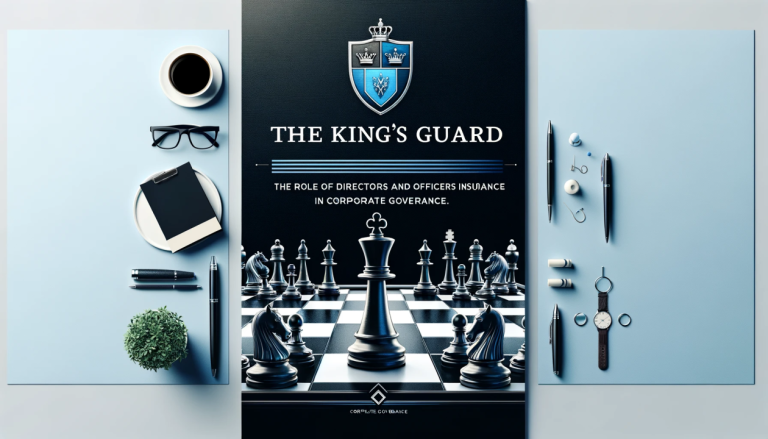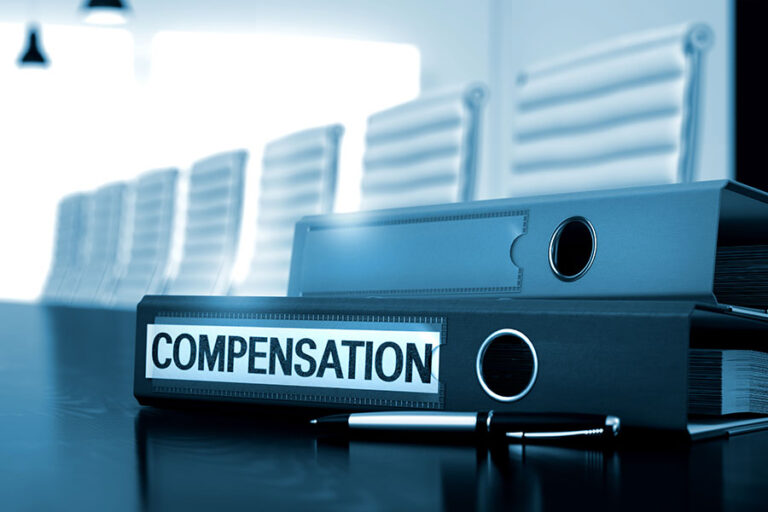Whether you’re a business using social media for marketing or an influencer whose livelihood is tied to online content, understanding social media liability and the insurance that covers it is essential. Let’s explore the unique risks of social media, who needs this type of protection, and how social media liability insurance works as a safeguard.
The Unique Risks of Social Media Content
Social media allows instantaneous, informal, and widespread publishing. That very nature creates some distinct liability risks:
- Defamation and Disparagement: A casual tweet or Facebook update that criticizes a person or company could be considered defamatory if it contains false statements that harm reputation. Unlike a carefully edited press release, social posts are often written on the fly, increasing the chance of an unfounded claim slipping in. Also, negative reviews or comments about competitors (even if intended as opinion or humor) can lead to allegations of disparagement or libel. Social media amplifies these effects because content can be shared rapidly, potentially multiplying the damage claimed by the offended party.
- Intellectual Property Infringement: It’s common to share images, memes, videos, and music on social platforms – but using content you don’t own or have rights to can trigger copyright or trademark infringement claims. For instance, using a popular song as background in a promotional TikTok video or reposting someone else’s photograph on your business’s Instagram without permission could violate IP laws. Companies and content creators often mistakenly assume “if it’s online, it’s free to use,” which is not true. The informality of social media sometimes leads to laxity in checking usage rights, hence the risk.
- Privacy and Personal Data Issues: Businesses engaging on social media might run contests or campaigns that collect user data, or they might share client success stories or testimonials. If done without proper consent, this could violate privacy regulations or rights. Additionally, posting photos or videos of individuals without their permission (especially in sensitive contexts) can lead to claims of violating someone’s privacy or right of publicity. For example, a restaurant owner posting CCTV footage of a rude customer as a “shaming” social post could find themselves sued for public disclosure of private facts or portraying someone in a false light.
- Advertising and Regulatory Violations: Influencers and brands need to follow advertising rules on social media. This includes disclosing paid partnerships or sponsorships. If an influencer fails to indicate a post is an #ad and a follower relies on their recommendation and feels misled, it could result in legal complaints or even regulatory fines. While regulatory fines (like those from the FTC) might not be covered by insurance, lawsuits from consumers alleging false advertising or deceptive practices might be. Similarly, a company’s social media ad campaign could unintentionally violate discrimination laws or other regulations, leading to liability. Social media’s global reach means even small businesses are publishing to jurisdictions with varying advertising laws.
- Employee Conduct on Social Media: Sometimes an employee’s personal social media activity can create liabilities for their employer. If an employee manages a corporate account and posts something offensive or erroneous, the company is on the hook. Or if employees post harassing or defamatory content about coworkers or customers on personal accounts, sometimes lawsuits ensue that name the employer for failing to prevent or respond to the behavior. Social media blurs personal and professional lines – a risk factor for organizations.
The speed and public nature of social media exacerbate all these risks. A mistake can’t easily be taken back once thousands have seen it (even deleting a post doesn’t ensure it’s gone, as screenshots or retweets may persist). This is why specialized liability coverage addressing social media is increasingly vital.
Who Needs Social Media Liability Coverage?
Virtually any entity or individual with a public social media presence should evaluate their need for coverage:
- Businesses of all sizes: From large corporations to small local businesses, if you have official social media accounts (or even if customers talk about your business online), you have exposure. A single customer accusation or viral negative post could spin into a lawsuit. For example, a small business responding angrily to a Yelp review on social media could be accused of defamation if they make harsh false statements about that customer in return. Many businesses also rely on user-generated content or run social media campaigns that, if not managed carefully, could lead to IP or privacy disputes. Social media liability insurance (often encompassed within a media liability policy or sometimes covered under a technology/errors & omissions policy) would help defend and cover costs in these scenarios.
- Marketing and PR Agencies: Agencies that handle clients’ social media accounts or craft social media campaigns definitely need this coverage. If something goes wrong – say an ill-advised tweet for a client causes public backlash or a legal complaint – the client may hold the agency responsible. Agencies can be sued for negligence or error in managing social content. In fact, many client contracts require marketing firms to carry media liability insurance including social media coverage, to indemnify the client if there’s a lawsuit due to the agency’s work.
- Influencers, Bloggers, and Content Creators: Social media is the business for influencers and professional bloggers/vloggers. If you’re an influencer, you are effectively a media publisher and spokesperson rolled into one. You face risks like promoting a product that turns out to be problematic (leading to followers suing for misleading statements), or saying something about a public figure that triggers a defamation claim, or using copyrighted music in your videos (leading to a lawsuit from a record label). Specialized influencer insurance or media liability cover can protect individuals in this space. Considering how many influencers are making lucrative careers on platforms like YouTube or Instagram, it’s important to insure that livelihood against lawsuits – which are not unheard of in the influencer world.
- Nonprofits and Community Groups: Even organizations outside the commercial sphere can benefit from social media liability coverage. A nonprofit running a campaign on social media could inadvertently libel a company or individual it criticizes, or face an IP claim for using a photo in a fundraising post. Often, nonprofits have volunteers managing social accounts who may not be communications experts, increasing the chance of a misstep. A media liability policy can usually extend to cover the nonprofit’s social media activities.
- Executives and Employees (Personal Accounts): While a company’s insurance wouldn’t typically cover an employee’s purely personal social media, there are instances where personal posts by a high-level executive can blow back on the company, and insurance might respond. For example, if a CEO tweets something controversial and gets sued personally (and sometimes the company is named as well), a Directors & Officers (D&O) insurance policy might come into play for the personal liability, or the company’s media policy might step in if the content was arguably company-related. Some insurers now offer personal injury coverage that can include libel/slander committed by individuals on social media (this might appear in high-net-worth personal liability umbrella policies). In a broad sense, the prevalence of social media means even individuals should be mindful – but businesses in particular should ensure their policies address social media usage, since the lines can blur.
In summary, anyone using social media as a tool to communicate or conduct business should consider the need for liability coverage. Often, social media liability is not a separate insurance policy but included in a comprehensive media liability or professional liability policy. The key is confirming that social media activities are not excluded and are explicitly covered within whichever insurance you obtain.
How Social Media Liability Insurance Works
Social media liability insurance isn’t a distinct product per se, but rather a component of media liability coverage. Here’s how it functions and what it typically covers:
- Defense and Indemnification: If a claim or lawsuit arises from your social media content, the insurance will defend you (i.e., provide legal representation) and indemnify you (pay settlements or judgments) up to the policy limits. For example, let’s say your company posts a meme that unintentionally contains another brand’s logo in a disparaging way, and that brand sues for trademark infringement and defamation. Your media liability insurance would assign a lawyer to your case, cover the legal expenses, and pay any settlement if needed (after your deductible). Without insurance, those costs would come straight out of your pocket or your company’s funds.
- Covered Platforms and Content: A good policy will cover content published on any social platform – whether it’s text, images, video, or audio. This means Facebook posts, tweets, YouTube videos, LinkedIn articles, blog posts, TikTok clips, Snapchat stories, etc. are all within scope. It also covers content you share through those platforms (if you’re resharing someone else’s content and get in trouble, you could be covered). Some policies explicitly list internet and social media content as covered under definitions of “media material” or “publications.” If you have an older policy, it’s worth updating or confirming that it’s not limited to “print and broadcast” but indeed extends to online media. Virtually all modern media liability policies do include online/social content, but double-checking is wise.
- Third-Party Claims: The insurance responds to third-party claims – meaning someone external making a demand against you. It does not cover your own losses if you, for instance, willingly remove content or face a platform penalty. For example, if a social network bans your account due to alleged policy violations, that’s not something insurance covers (that’s not a liability claim). But if an individual sues you for something you posted, that is covered. Also, if a regulatory body fines you for non-compliance (like not marking an ad as an ad), many policies will not cover fines and penalties as those are often uninsurable by law. However, the legal defense against a regulatory action might be covered, depending on policy wording. The main point: the policy protects you when others claim you caused them harm through social media content.
- Exclusions to Note: Some policies might exclude certain types of content or circumstances. Common exclusions include deliberate wrongdoing (if you intentionally post a known falsehood, that might void coverage for that claim), criminal acts, and war/terrorism. Additionally, many media policies exclude patent infringement – so if your social media app or campaign somehow infringes a patent (unlikely for most users, more relevant to tech companies), that wouldn’t be covered. Employment-related harassment or discrimination might fall under an Employment Practices Liability policy rather than media liability, even if it happened on social media. It’s also worth noting that user-generated content on your platforms could be a grey area – some policies cover claims arising from third-party comments on your social pages (like if someone claims you moderated comments in a biased way or allowed defamatory comments to remain), but others might not. If you host a forum or allow comments, it’s a good idea to ensure your policy addresses that.
- Overlap with Cyber Insurance: There can be a gray line between social media liability and cyber liability in certain scenarios. For instance, if your social media account is hacked and the hacker posts defamatory or malicious content from your account, a media liability policy should cover the defamation claim, but a cyber insurance policy might come into play to help you deal with the breach of your account security. Likewise, if someone sues you because a post you made led to a privacy breach (like you inadvertently leaked personal data on a live stream), both cyber and media policies might have some relevance. Typically, media liability handles the content of communications, while cyber handles data breaches, hacks, and system failures. For comprehensive protection, companies often have both. The good news is insurers and brokers are increasingly aware of social media issues, so they strive to ensure there are no gaps between these policies – often through coordination and careful wording.
Real-World Examples of Social Media Claims
To illustrate how social media liability issues manifest, consider a few hypothetical (but realistic) scenarios:
- Example 1: The Viral Customer Complaint Gone Wrong – A restaurant has a customer who posts a scathing, possibly exaggerated review on Twitter. The restaurant’s owner, from the business account, responds by accusing the customer of lying and includes some personal details about that customer. The customer then sues the restaurant for defamation (because of being called a liar publicly) and invasion of privacy (for sharing personal info). In this case, the restaurant’s social media content sparked the claim. Their media liability insurance would cover the lawsuit, paying for legal defense and any settlement. A lesson here is that heated social media exchanges can escalate to legal battles.
- Example 2: Influencer’s Promotional Post Leads to Lawsuit – A fitness influencer on Instagram promotes a certain diet supplement, claiming it has specific health benefits. A follower tries it, experiences adverse effects, and files a lawsuit against the influencer (and the supplement company) claiming the promotion was misleading and caused harm. The influencer might be accused of false advertising or even negligence. Social media liability insurance (media E&O for influencers) would help the influencer by hiring a lawyer to defend against the claim and covering damages if the court finds the post was indeed misleading and caused the follower’s injury.
- Example 3: Employee Social Media Slander – An employee at a small tech startup, on their personal Facebook, makes a public post accusing a competitor company of unethical behavior and poor security practices. That competitor discovers the post and sues the startup (arguing the employee was acting as an agent of their employer or that the employer is responsible for employees’ public statements about industry matters) for slander and business disparagement. The startup’s media liability policy would likely treat this as a covered claim (assuming the policy doesn’t exclude things employees do outside of work – many would still cover it if it relates to your business interests). The insurer would defend the startup (and possibly the employee) against the competitor’s claim. Internally, of course, the company should address the rogue employee’s actions, but externally, insurance provides a safety net.
- Example 4: Copyrighted Image in a Social Ad – A boutique hotel posts a gorgeous photo of a city skyline on its Twitter and Instagram as part of an ad campaign for a weekend getaway package. The photo was just found via Google and no permission was obtained. Unfortunately, the image was taken by a professional photographer who notices the hotel using it without a license. The photographer sends a demand for compensation and threatens a copyright infringement lawsuit. The hotel’s media liability insurance would handle this claim – likely negotiating a settlement or paying damages for the unlicensed use, and covering the legal costs. This example is extremely common; many small businesses don’t realize the images they grab for social media are protected, and photographers are vigilant in defending their rights.
These examples underscore that social media liability issues can arise in various ways – sometimes unexpectedly. Social media liability insurance ensures that when such incidents occur, the financial burden and legal complexities are handled by professionals and not solely by you.
Risk Management: Preventing Social Media Liabilities
While having insurance is critical, prevention is always better than cure. Businesses and individuals can take steps to reduce the chance of social-media-related claims:
- Establish a Social Media Policy: If you’re a business, have clear guidelines for anyone posting on behalf of the company. Define what is acceptable content and tone, and what’s off-limits (e.g., no posting of others’ content without permission, no engaging in arguments online, no comments on politics/religion unless core to your brand, etc.). Also address personal accounts – remind employees that their public statements can reflect on the company and certain conduct (like harassing someone online) could lead to disciplinary action. A well-communicated policy can prevent a lot of knee-jerk harmful posts.
- Train and Think Twice: It’s wise to train whoever handles your social media about libel, privacy, and IP basics. Often a short workshop or training session can alert staff to red flags (like “Don’t call someone a fraud unless you have irrefutable evidence,” or “Don’t use images from Google search without proper licensing”). For individuals, “think twice before you post” is the golden rule. Before hitting publish, consider if everything you’re saying is truthful (if it’s a factual claim), that you wouldn’t mind seeing it repeated out of context, and that you have rights to everything you’re sharing.
- Moderation and Response Strategy: If you allow comments or user posts on your pages, have a moderation plan. While laws often protect platform owners (like you) from liability for user comments (see: Section 230 in the U.S.), you might still face reputational or legal issues if you leave up clearly defamatory or infringing content once you’re aware of it. Many businesses choose to delete or hide comments that are hateful or potentially libelous. Similarly, have a plan for responding to social media crises – who drafts responses, who approves them – to avoid hasty statements that could worsen liability.
- Use Legal Review for High-Stakes Posts: If you’re about to publish something potentially sensitive (like exposing wrongdoing by a person or company, or using content that you think might be someone else’s IP but you’re not sure), consider running it by legal counsel first. Many media companies have attorneys review investigative pieces or risky content pre-publication – a practice known as “pre-publication review” or “clearance review”. It’s an extra step that can catch and fix issues before they become claims. If you don’t have in-house counsel, even a quick consult with an attorney on a specific question (like “Can I say this about a competitor?”) could save you a lot of trouble.
These precautions, combined with a robust social media liability insurance in place, put you in the best position to leverage the power of social media without fear. If something still goes awry – and mistakes do happen even in the best of systems – the insurance is there to cushion the blow.
Conclusion: Protecting Your Online Voice
Social media is an indispensable tool for modern communication, marketing, and personal branding. Along with its great benefits comes the responsibility to navigate it wisely and the prudence to protect oneself against unforeseen fallout. Social media liability insurance provides that protection, ensuring that a tweet gone wrong or a post taken out of context doesn’t lead to financial ruin.
For businesses, it means one ill-advised comment by an employee won’t spell bankruptcy due to a lawsuit – the insurance will handle the heavy lifting. For content creators and influencers, it means you can focus on authentic engagement with your audience, knowing you have a safety net if someone targets you with a legal claim. Even as an individual or professional, having coverage (often via homeowner’s or umbrella policies that include personal injury) can safeguard you from expensive litigation stemming from something as commonplace as a Facebook argument.
In the end, being active on social media is like speaking in a public square – your words carry weight and visibility. Social media liability insurance ensures your freedom to speak and promote in that public square is backed by financial and legal protection. Coupled with smart online practices, this insurance allows you to harness the power of social platforms confidently and responsibly, without the constant worry of “what if someone sues me for this.” It’s an increasingly essential part of risk management in our digital, connected world.
Closing Summary: Social media liability insurance is a vital safeguard for the digital age. It covers businesses and individuals from lawsuits arising out of social media content – whether that’s a claim of defamation from a tweet or an IP infringement from an Instagram post. Given how easily a social post can trigger a legal reaction, having this coverage means you won’t face those battles alone. Instead, your insurer will provide the lawyers and funds needed to defend your online speech. From companies using social media for marketing to influencers building personal brands, anyone communicating online should consider this protection. With the combination of prudent social media practices and robust liability insurance, you can engage online audiences boldly while being prepared for any legal storms that might appear on the horizon. In short, social media liability insurance lets you focus on connecting and creating, knowing you’re protected against the unexpected consequences of going viral for the wrong reasons.












































































































